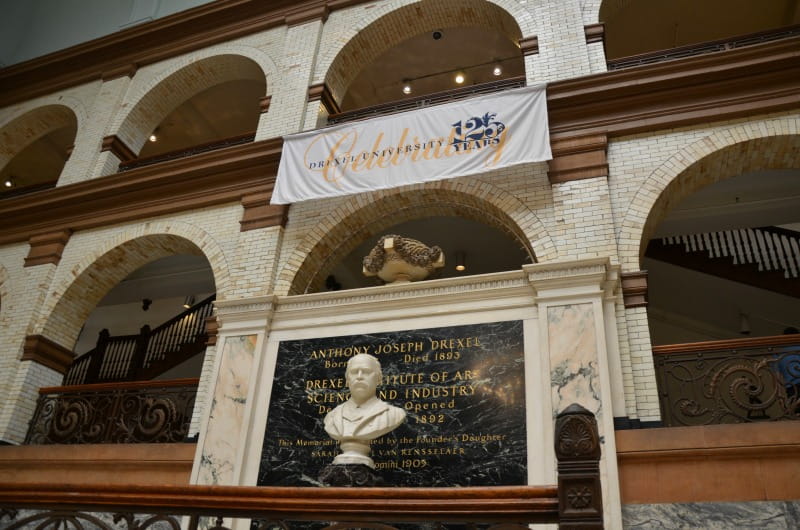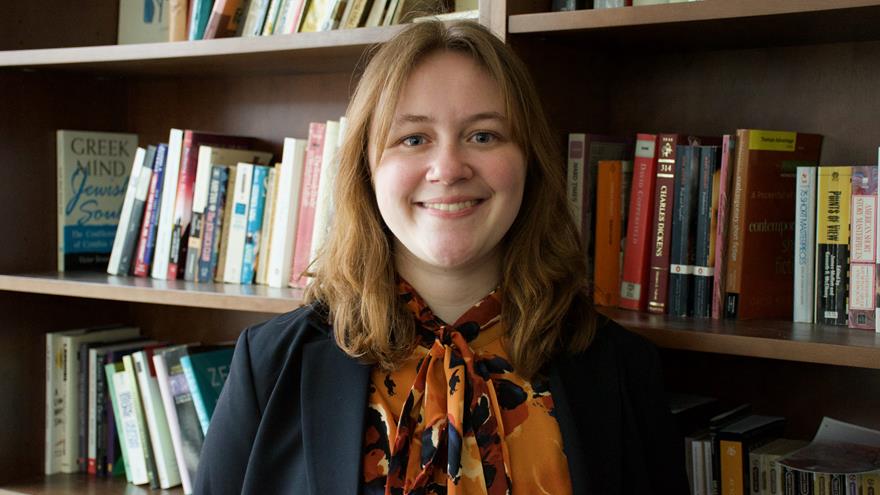Drexel Throws Itself a Yearlong 125th Anniversary Party

This article is part of the DrexelNow “Faces of Drexel” series honoring Drexel’s history as part of the University-wide celebration of the 125th anniversary of Drexel’s founding in 1891.
When financier and philanthropist Anthony “Tony” J. Drexel founded the Drexel Institute of Art, Science and Industry in 1891, it was with a vision that the University still adheres to even today: “I know that the world is going to change, and, therefore, the Institute must change with it."
Drexel has done exactly that: including students of all genders, races, religions and socio-economic statuses before inclusion was a norm; instigating a co-operative education program back in 1919 before internships and other similar programs were created and presented to students; strengthening its academic departments and widening its certifications and degree programs when more educational opportunities arose and were expected; and, of course, through so many more examples and opportunities that have come up over the past 125 years.
It’s important, then, that Drexel honors its past, present and future as a reflection of our founding vision — and that it does so in a variety of ways. This year marks the 125th anniversary of Drexel’s founding, which means that the University has planned a yearlong celebration to celebrate its heritage.
Two exhibits will be on display during the academic year to display key artifacts and aspects of Drexel’s history. The Drexel Collection: Celebrating 125 Years tells the story not only of the University but of The Drexel Collection itself, which was also founded in 1891 with a donation from founder Anthony “Tony” J. Drexel. The exhibit will be held in the Rincliffe Gallery until Jan. 4, 2017, and features objects and stories from The Drexel Collection. The other exhibit, 125 Years: Drexel and the City, will be held in the Leonard Pearlstein Gallery in the Westphal College of Media Arts & Design from Jan. 19 to March 19. Artifacts, images and text of Drexel’s history and neighborhood will be displayed, as well as a look at the origins and programs of Westphal. Drexel faculty, staff and graduate students helped curate the exhibit and will be involved with key programming along with community residents of the nearby Mantua and Powelton neighborhoods.
A special book will be published later this fall that covers important areas of Drexel’s history as well as the institution’s extensive history with the city of Philadelphia. “Building Drexel: The University and Its City, 1891-2016” features contributions from over 30 faulty, staff and students and was co-edited by two professors: Richardson Dilworth, PhD, professor in the Department of Politics in the College of Arts and Sciences and director of the Center for Public Policy; and Scott Knowles, PhD, associate professor and head of the Department of History in the College of Arts and Sciences.
To publicize the book and the history it encompasses, Knowles has scheduled a public lecture series every Thursday this fall until Dec. 1. The discussions will be mostly held from 12–12:50 p.m. in the A.J. Drexel Picture Gallery in Drexel’s Main Building and will feature a talk from the book’s contributors about the sections they authored: the Drexel family, Greek life traditions, athletics and even the future of Drexel, which will be hosted by President John A. Fry. A special walking tour will also be held on Oct. 27 to point out historical points of interest on Drexel’s campus.
Knowles will also voice a video produced by Drexel commemorating the five chapters of Drexel’s story: Drexel’s founding through the first two decades of the 20th century; the time before, during and after World War I; the peak of the post-World War II boom to the valley of the early 1990s financial and leadership struggles; the Drexel renaissance under the direction of President Constantine Papadakis and the modern era under President Fry that is expanding Drexel’s civic engagement and the size of Drexel’s campus.
The video will premiere for the first time at the commemorative 125th anniversary event held from 1–3 p.m. on Dec. 7 in the Main Building’s Great Court. The event will act as Drexel’s annual holiday party as well as a tribute to the original Dec. 17, 1891 founding. During the festivities, a time capsule will be filled with Drexel-specific items that were previously voted upon by the Drexel community before it is buried in the Korman Quad.
This event, like many others held throughout the year, will feature an exclusive Drexel beer. “Dragon’s Gold,” a special ESB (extra special bitter) amber ale, was created specifically for Drexel’s 125th anniversary by alumnus Gene Muller '84, who founded Flying Fish Brewing Co. in 1995. The beer was chosen to resemble the drink that would have been commonly served when Drexel was first opened. Nurul Rumlan, a senior graphic design major in the Westphal College of Media Arts & Design, designed the beer’s logo during her co-op at Drexel’s Office of Institutional Advancement (IA) — it’s blue and gold, of course.
Another Drexel student and senior graphic design major, Emily Charniga, created the official 125 years logo used for the anniversary. Charniga’s logo incorporates the Drexel Dragon as well as the official Drexel seal and can be seen around campus.
The Barnes & Noble bookstore on Drexel’s campus will sell special merchandise commemorating Drexel’s quasquicentennial (the Latin word for “125th anniversary), some of which feature Charniga’s logo. Tee shirts, sweatshirts, accessories and other apparel will be available for purchase.
To keep up with all of these events and learn even more about the various ways Drexel is celebrating, check out the special 125th anniversary website at www.drexel.edu/125years.
In This Article
Drexel News is produced by
University Marketing and Communications.

